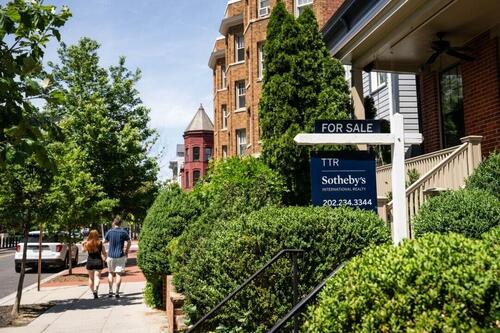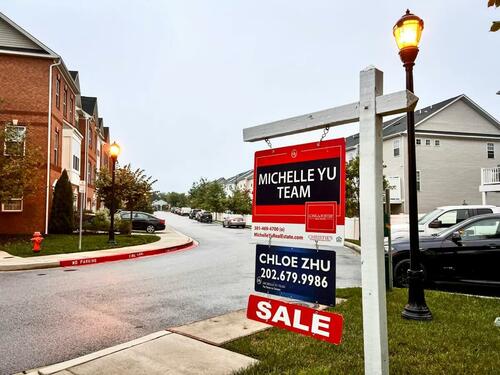Authored by Andrew Moran via The Epoch Times,
The country’s top housing regulator said the Trump administration is considering another tool that could address America’s affordability challenges.
“We are actively evaluating portable mortgages,” Bill Pulte, Federal Housing Finance Agency director, said in a Nov. 12 post on X, providing no further details.
This comes days after he suggested that Fannie Mae and Freddie Mac were “evaluating how to do assumable or portable mortgages, in a safe and sound manner.”
Portable mortgages would allow homeowners to transfer their existing mortgages—rates, terms, and amortization schedule—to a new residential property.
The concept, in theory, would help borrowers avoid penalties and possibly save on interest.
It is unavailable in the United States but is an option in Canada, the UK, and parts of the European Union.
Assumable mortgages refer to when a homebuyer takes over the seller’s existing mortgage, including the interest rate, balance, and repayment terms.
For the past few years, the supply of existing homes has been a challenge for the real estate market.
Despite a year of gradual gains, housing inventory remains historically low, totaling about 1.55 million units—well below the long-term average of 2.2 million units recorded from 1982 to 2025.
With months’ supply at 4.6—the number of months it would take to exhaust current housing stocks—the market still favors sellers, underscoring persistent market supply constraints.
Although the United States has struggled with years of underbuilding, a sizable factor has been the lock-in effect that occurred during the COVID-19 pandemic, when the Federal Reserve slashed interest rates to zero percent to help cushion the economic blows from the country’s shutdown.
Shortly afterward, 30-year mortgage rates cratered, reaching an all-time low of 2.65 percent in January 2021.
First-time homebuyers and homeowners took advantage of this once-in-a-lifetime opportunity when home prices were lower than they are today.
Today, approximately half of all current U.S. mortgages originated during the COVID-19 pandemic, according to research from the Federal Reserve Bank of Philadelphia. Additionally, many homeowners refinanced at the lower mortgage rates.
However, this has made it difficult for public policymakers to unlock the golden handcuffs.
Nearly 53 percent of U.S. households enjoy a mortgage rate lower than 4 percent, so they have been reluctant to list their homes for sale, effectively constraining supply.
The Federal Housing Finance Agency estimated in a 2024 paper that the lock-in effect prevented about 1.72 million home sales between 2022 and 2024 and increased home prices by 7 percent.
A townhouse for sale in Elkridge, Md., on Sept. 27, 2024. Madalina Vasiliu/The Epoch Times
The average contract interest rate for a 30-year mortgage is 6.34 percent.
In addition to exacerbating housing affordability problems, it also creates broader economic issues, including the restriction of labor mobility, which affects productivity and limits household formation.
“These factors may combine to reduce utility for borrowers and underscore the importance of understanding the extent to which borrowers are locked-in,” the paper states.
Housing affordability became one of the top priorities for the current and previous administrations.
President Donald Trump recently proposed creating 50-year mortgages, a move designed to help more Americans priced out of the market to get their feet in the door of homeownership.
Trump later told Fox News host Laura Ingraham that a 50-year mortgage is “not even a big deal.”
Pulte called it a “game changer.” However, after some pushback on social media, Pulte said a 50-year mortgage option was “simply a potential weapon in a wide arsenal of solutions that [the Federal Housing Finance Agency is] developing right now.”
In an interview with Fox News on Nov. 10, National Economic Council Director Kevin Hassett defended the proposal, saying that it could lower monthly payments for middle-class Americans.
“What it does is, it reduces the monthly payment quite a bit for a typical home for middle America by a few hundred dollars a month,” Hassett said. “We need to help people get back into homes.”
In the four weeks ending on Oct. 26, the median U.S. monthly housing payment was $2,530, according to data gathered by Redfin. This is down by 1.4 percent year-over-year, the sharpest decline since November 2024.
Loading recommendations...


